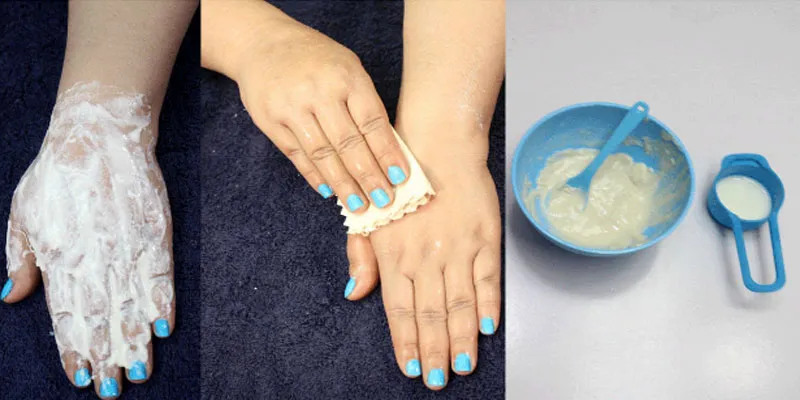Understanding Skin Whitening and Hyperpigmentation
Skin whitening, or skin brightening, is a popular skincare goal for many, often aimed at reducing hyperpigmentation and achieving a more even skin tone. Hyperpigmentation refers to the darkening of an area of skin caused by an increase in melanin, the pigment responsible for skin color. This can manifest as dark spots, patches, or an overall uneven complexion. Understanding the underlying causes of hyperpigmentation is crucial before embarking on any skin-whitening journey, allowing for targeted and effective treatment. The journey to radiant skin often involves a combination of patience, consistency, and the right knowledge.
What Causes Uneven Skin Tone
Uneven skin tone can be attributed to several factors. Sun exposure is a primary culprit, as UV radiation stimulates melanin production, leading to dark spots and premature aging. Hormonal changes, such as those experienced during pregnancy (melasma), can also trigger hyperpigmentation. Additionally, inflammation, acne, and skin injuries can result in post-inflammatory hyperpigmentation (PIH), where the skin darkens in areas that have healed from these issues. Genetic predisposition also plays a role, influencing how susceptible one is to hyperpigmentation. Furthermore, certain skincare products and harsh treatments can sometimes exacerbate uneven skin tone, highlighting the importance of gentle and mindful skincare practices.
Factors That Contribute to Hyperpigmentation

Beyond the primary causes, various factors contribute to the development and severity of hyperpigmentation. These include the use of certain medications that increase sun sensitivity, such as some antibiotics and anti-inflammatory drugs. Environmental pollutants and irritants can also trigger inflammation and subsequent pigment production. Picking or squeezing blemishes can worsen PIH, as can using harsh exfoliants or treatments that damage the skin barrier. Moreover, poor skincare routines lacking sun protection and hydration can intensify hyperpigmentation. Dietary choices and overall health also influence skin health, as a balanced diet rich in antioxidants can help protect against free radical damage and promote a brighter complexion.
DIY Skin Whitening Remedies The Natural Approach
Embracing natural, DIY skin whitening remedies offers a gentle and often cost-effective approach to achieving a more radiant complexion. These homemade treatments utilize ingredients readily available in your kitchen, minimizing the risk of harsh chemicals and potential side effects. The natural approach focuses on brightening the skin by inhibiting melanin production, exfoliating dead skin cells, and providing essential nutrients for skin health. Many of these remedies are packed with antioxidants and vitamins that support overall skin wellness. However, it’s important to conduct a patch test before applying any new remedy to a larger area of skin, ensuring there are no adverse reactions.
Lemon Juice The Skin-Brightening Powerhouse
Lemon juice is a well-known natural skin brightener due to its high concentration of Vitamin C, a potent antioxidant that inhibits melanin production. Its acidic properties also act as a gentle exfoliant, helping to remove dead skin cells and reveal a brighter complexion underneath. Lemon juice can help fade dark spots and lighten skin tone with regular use. However, it’s essential to use lemon juice with caution, as its acidity can cause irritation, especially for sensitive skin types. Always dilute lemon juice before applying it to the skin, and avoid sun exposure after application to prevent photosensitivity.
How to Use Lemon Juice Safely
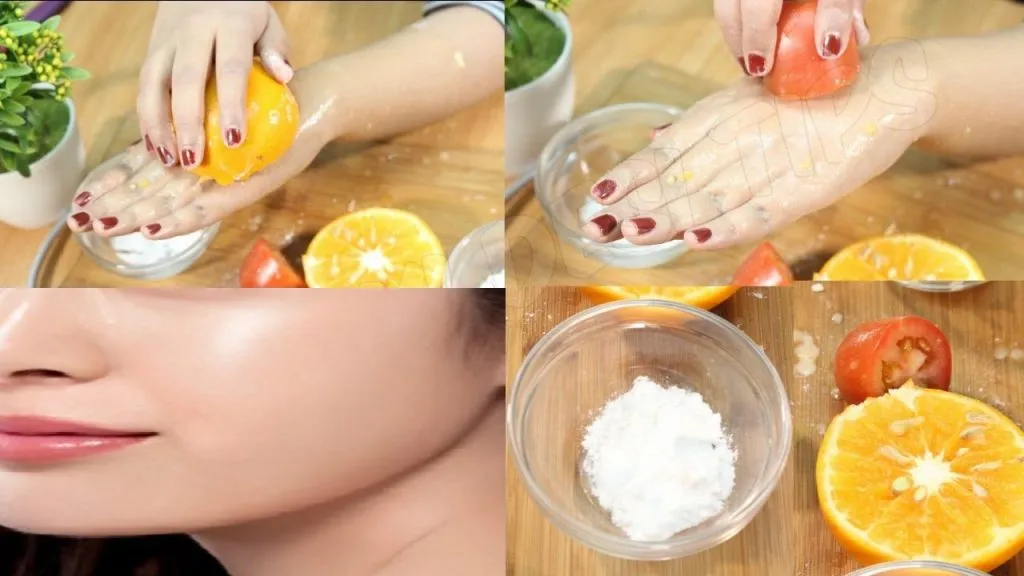
To use lemon juice safely, always dilute it with water, honey, or other soothing ingredients to minimize irritation. Perform a patch test on a small area of skin before applying it to larger areas, and observe for any redness, itching, or burning sensations. If irritation occurs, discontinue use immediately. For a simple remedy, mix equal parts lemon juice and water, apply to the affected areas with a cotton ball, and leave on for no more than 15-20 minutes before rinsing thoroughly. Follow up with a moisturizer and always wear sunscreen during the day to protect your skin from sun damage. Avoid using lemon juice on broken or irritated skin.
Turmeric A Time-Tested Whitening Agent
Turmeric, a staple in many culinary traditions, is also a powerful skin-brightening agent. Its active compound, curcumin, possesses potent anti-inflammatory and antioxidant properties that help reduce hyperpigmentation and promote an even skin tone. Turmeric can inhibit melanin production and reduce the appearance of dark spots and blemishes. Furthermore, turmeric’s anti-inflammatory benefits can soothe irritated skin and promote healing. The use of turmeric in skincare dates back centuries, making it a reliable and time-tested remedy for achieving a brighter complexion.
Turmeric Face Masks for Glowing Skin
Create a simple turmeric face mask by mixing turmeric powder with yogurt, honey, and a few drops of lemon juice. Apply the mask evenly to your face and neck, avoiding the eye area. Leave it on for 15-20 minutes, then rinse with lukewarm water. The combination of turmeric’s brightening properties, honey’s moisturizing benefits, and yogurt’s exfoliating action creates a powerful formula for a glowing complexion. For those with sensitive skin, consider omitting the lemon juice to avoid irritation. Regular use of turmeric face masks can help reduce the appearance of dark spots, even out skin tone, and leave your skin looking radiant and healthy.
Yogurt and Honey The Soothing Combination
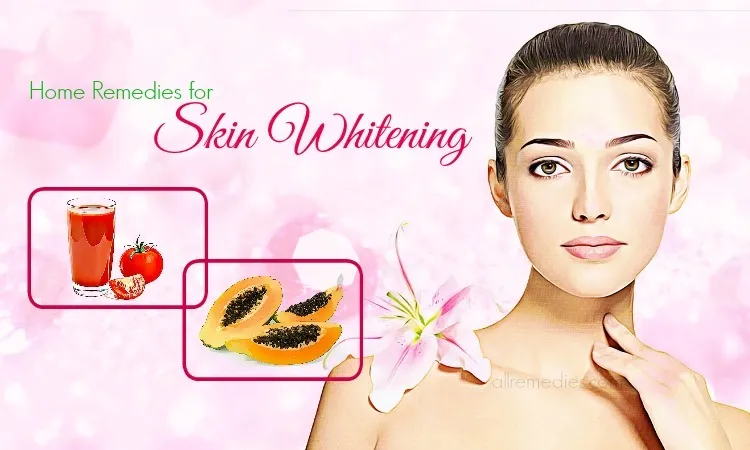
Yogurt and honey make a soothing and effective combination for skin whitening, offering moisturizing and exfoliating benefits. Yogurt contains lactic acid, a gentle alpha-hydroxy acid (AHA) that exfoliates dead skin cells, revealing a brighter complexion. Honey is a natural humectant, attracting and retaining moisture, and also possesses antibacterial and anti-inflammatory properties. Together, they create a gentle yet effective remedy for reducing hyperpigmentation and promoting a healthy glow. This combination is suitable for most skin types, including sensitive skin, as the ingredients are generally well-tolerated.
Creating a Yogurt and Honey Mask
To create a yogurt and honey mask, simply mix plain yogurt (preferably full-fat for added moisture) with a tablespoon of raw honey. Apply the mixture evenly to your face and neck, avoiding the eye area. Leave it on for 15-20 minutes, allowing the lactic acid and honey’s enzymes to work their magic. Rinse with lukewarm water and pat your skin dry. This mask can be used several times a week to help brighten the skin, reduce dark spots, and provide deep hydration. You can customize the mask by adding other ingredients, such as a pinch of turmeric or a few drops of lemon juice, for enhanced brightening effects.
Aloe Vera The Hydrating and Whitening Effect
Aloe vera, known for its soothing and hydrating properties, also possesses skin-whitening benefits. The plant contains compounds that can inhibit melanin production, helping to lighten dark spots and even out skin tone. Additionally, aloe vera’s moisturizing capabilities keep the skin hydrated and plump, reducing the appearance of fine lines and wrinkles, and promoting a healthy glow. Its anti-inflammatory properties can also calm irritated skin and reduce redness, making it suitable for various skin types, including those prone to sensitivity. Aloe vera is a versatile ingredient that can be used alone or combined with other natural remedies.
Aloe Vera for Skin Whitening Tips
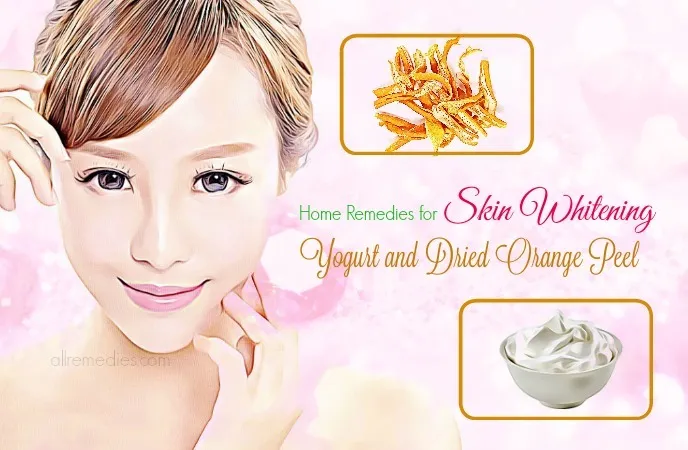
To use aloe vera for skin whitening, apply fresh aloe vera gel directly to the affected areas. You can either use the gel from a fresh aloe vera leaf or purchase pure aloe vera gel. Gently massage the gel into your skin and leave it on for 20-30 minutes before rinsing with water. For enhanced results, combine aloe vera gel with other skin-brightening ingredients, such as lemon juice or turmeric powder. Use this remedy regularly, ideally twice a day, to see noticeable improvements in skin tone and texture. Aloe vera is also an excellent after-sun treatment, providing relief from sunburn while promoting skin recovery.
Papaya Enzyme for Gentle Exfoliation
Papaya, rich in enzymes like papain, is a fantastic ingredient for gentle exfoliation and skin whitening. Papain helps remove dead skin cells, revealing a brighter complexion and reducing the appearance of dark spots and blemishes. The enzyme also has anti-inflammatory properties that can soothe irritated skin. Papaya is suitable for most skin types, including sensitive skin, as it provides effective exfoliation without harshness. Moreover, papaya’s vitamins and antioxidants nourish the skin, promoting a healthy and radiant glow. This tropical fruit offers a natural and effective way to improve skin tone and texture.
Papaya Mask Preparation
To prepare a papaya mask, blend ripe papaya pulp into a smooth paste. Apply the mask evenly to your face and neck, avoiding the eye area. Leave it on for 15-20 minutes, allowing the enzymes to gently exfoliate and brighten your skin. Rinse thoroughly with lukewarm water and pat your skin dry. For added benefits, you can combine papaya with other ingredients, such as honey for moisturizing or lemon juice for enhanced brightening. Regular use of a papaya mask can help improve skin texture, reduce the appearance of dark spots, and promote a more even skin tone. Ensure to use ripe papaya for maximum enzyme activity.
Milk The Gentle Skin Brightener
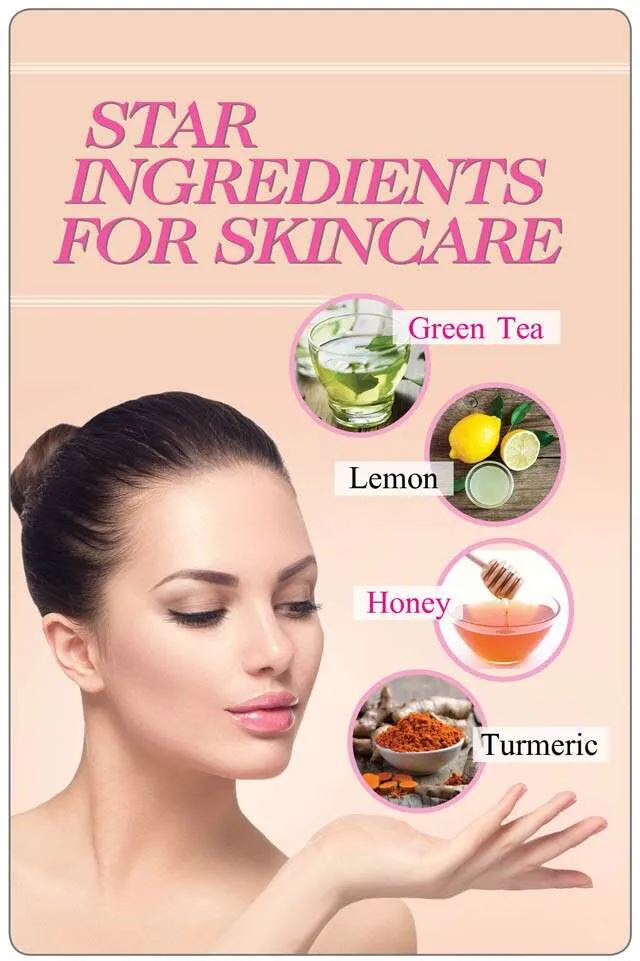
Milk contains lactic acid, a mild AHA that gently exfoliates the skin, revealing a brighter complexion. It also provides essential nutrients and moisturization, leaving the skin soft and supple. The gentle nature of milk makes it suitable for all skin types, including sensitive skin. Milk’s soothing properties help calm irritated skin, making it a great remedy for reducing redness and inflammation. Whether using whole milk or milk-based products, incorporating milk into your skincare routine offers a gentle and effective approach to skin whitening.
Using Milk for Skin Whitening
To use milk for skin whitening, you can apply it directly to your skin or incorporate it into face masks and cleansers. For a simple application, soak a cotton ball in milk and gently apply it to your face and neck. Leave it on for 10-15 minutes, then rinse with water. Alternatively, create a face mask by mixing milk with other skin-brightening ingredients, such as honey or turmeric. For example, mix milk with honey and apply it to your face for 20 minutes before rinsing. Using milk regularly in your skincare routine can help to lighten dark spots, even out skin tone, and provide essential hydration, resulting in a healthier, more radiant complexion.
Tomato Juice The Antioxidant Boost
Tomato juice is packed with antioxidants, particularly lycopene, which helps protect the skin from free radical damage and promotes a brighter complexion. The acids in tomato juice act as a mild astringent, helping to cleanse the skin and minimize the appearance of pores. Its vitamin C content also supports skin brightening and collagen production, contributing to a more youthful glow. Tomato juice is a versatile ingredient that can be used alone or in combination with other natural remedies to improve skin tone and texture. Regularly incorporating tomato juice into your skincare routine offers a refreshing and effective approach to skin whitening.
Tomato Juice for Skin Whitening Benefits

To use tomato juice for skin whitening, apply fresh tomato juice directly to the skin. You can apply it using a cotton ball or gently massage it into your face and neck. Leave the juice on for 15-20 minutes, allowing the antioxidants and acids to work their magic. Rinse thoroughly with water. Combining tomato juice with other ingredients, such as honey or yogurt, can enhance the benefits. For instance, you can mix tomato juice with a tablespoon of honey and apply it as a face mask for a brighter complexion. Regular use of tomato juice can help reduce dark spots, even out skin tone, and give your skin a healthy, radiant appearance.
Potato The Natural Bleaching Agent
Potato acts as a natural bleaching agent, making it effective for skin whitening. It contains enzymes that inhibit melanin production, helping to lighten dark spots and reduce hyperpigmentation. Potato also has anti-inflammatory properties that can soothe irritated skin and reduce redness. This readily available vegetable offers an affordable and accessible way to achieve a brighter, more even skin tone. Its gentle nature makes it suitable for all skin types, providing a natural alternative to chemical treatments.
How to Use Potato for Skin Whitening
To use potato for skin whitening, you can use the juice directly or create a mask. For a simple application, grate a raw potato and extract its juice. Apply the juice to the affected areas using a cotton ball and leave it on for 20-30 minutes before rinsing. Alternatively, you can create a potato mask by grating the potato, mixing it with a little water to form a paste, and applying it to your face. For enhanced benefits, combine potato with other skin-brightening ingredients, like lemon juice. Using potato regularly can help lighten dark spots, reduce blemishes, and promote a more even skin tone, revealing a brighter complexion.
Orange Peel The Exfoliating Powerhouse
Orange peel is an excellent exfoliating agent and a natural skin brightener, packed with Vitamin C and citric acid. These compounds help to gently exfoliate the skin, removing dead skin cells and revealing a brighter, more radiant complexion. The vitamin C content also inhibits melanin production, helping to fade dark spots and reduce hyperpigmentation. Orange peel’s abrasive texture provides gentle exfoliation, which is beneficial for removing impurities and promoting cell turnover. Using orange peel in skincare offers a natural and effective way to improve skin tone and texture.
Creating an Orange Peel Mask
To create an orange peel mask, dry orange peels in the sun or in a dehydrator until they are completely dry. Grind the dried peels into a fine powder. Mix the powder with water, milk, or yogurt to form a paste. Apply the paste evenly to your face and neck, avoiding the eye area. Leave the mask on for 15-20 minutes, allowing the citric acid and Vitamin C to work on your skin. Rinse thoroughly with lukewarm water and pat your skin dry. The orange peel mask offers a combined benefit of exfoliation and brightening. Consistent use of this mask will help reduce dark spots, even out skin tone, and promote a glowing complexion.
DIY Skin Whitening Remedies How to Maintain Results
Maintaining the results achieved through DIY skin whitening remedies requires a consistent skincare routine and a holistic approach to skin health. This involves adopting habits that protect your skin from damage and support its natural processes. Preventing hyperpigmentation from returning requires a commitment to skincare and lifestyle choices. With diligence and care, you can enjoy a consistently radiant and even complexion.
Sun Protection Importance
Sun protection is paramount to maintaining skin-whitening results, as sun exposure triggers melanin production, which can lead to the return of dark spots and uneven skin tone. Always use a broad-spectrum sunscreen with an SPF of 30 or higher every day, even on cloudy days. Reapply sunscreen every two hours, especially when outdoors. Besides sunscreen, wear protective clothing, such as hats and long sleeves, and seek shade during peak sun hours. Consistent sun protection is crucial for preventing further damage and preserving your efforts to achieve a brighter complexion.
Consistent Skincare Routine
Maintaining a consistent skincare routine is essential for preserving the benefits of DIY skin whitening remedies. This routine should include gentle cleansing, regular exfoliation, and moisturizing. Use a gentle cleanser that removes impurities without stripping the skin of its natural oils. Exfoliate your skin 1-2 times per week to remove dead skin cells and promote cell turnover, but avoid harsh exfoliants that can irritate the skin. Apply a moisturizer to keep your skin hydrated and healthy. Incorporate targeted treatments, such as serums containing vitamin C or niacinamide, to further boost your skin-brightening efforts. A consistent skincare routine will help you sustain a bright and even complexion.
Lifestyle Changes to Support Skin Whitening
Lifestyle changes significantly support skin-whitening efforts and promote overall skin health. Maintaining a balanced diet rich in antioxidants, vitamins, and minerals nourishes the skin from the inside out. Drink plenty of water to keep your skin hydrated and flush out toxins. Get adequate sleep, as sleep deprivation can lead to dullness and increased inflammation. Manage stress levels through practices such as meditation or yoga, as stress can worsen skin conditions. Avoid smoking and limit alcohol consumption, as both can harm skin health. Making these lifestyle adjustments can enhance the effectiveness of your DIY remedies and contribute to a brighter, more radiant complexion.
